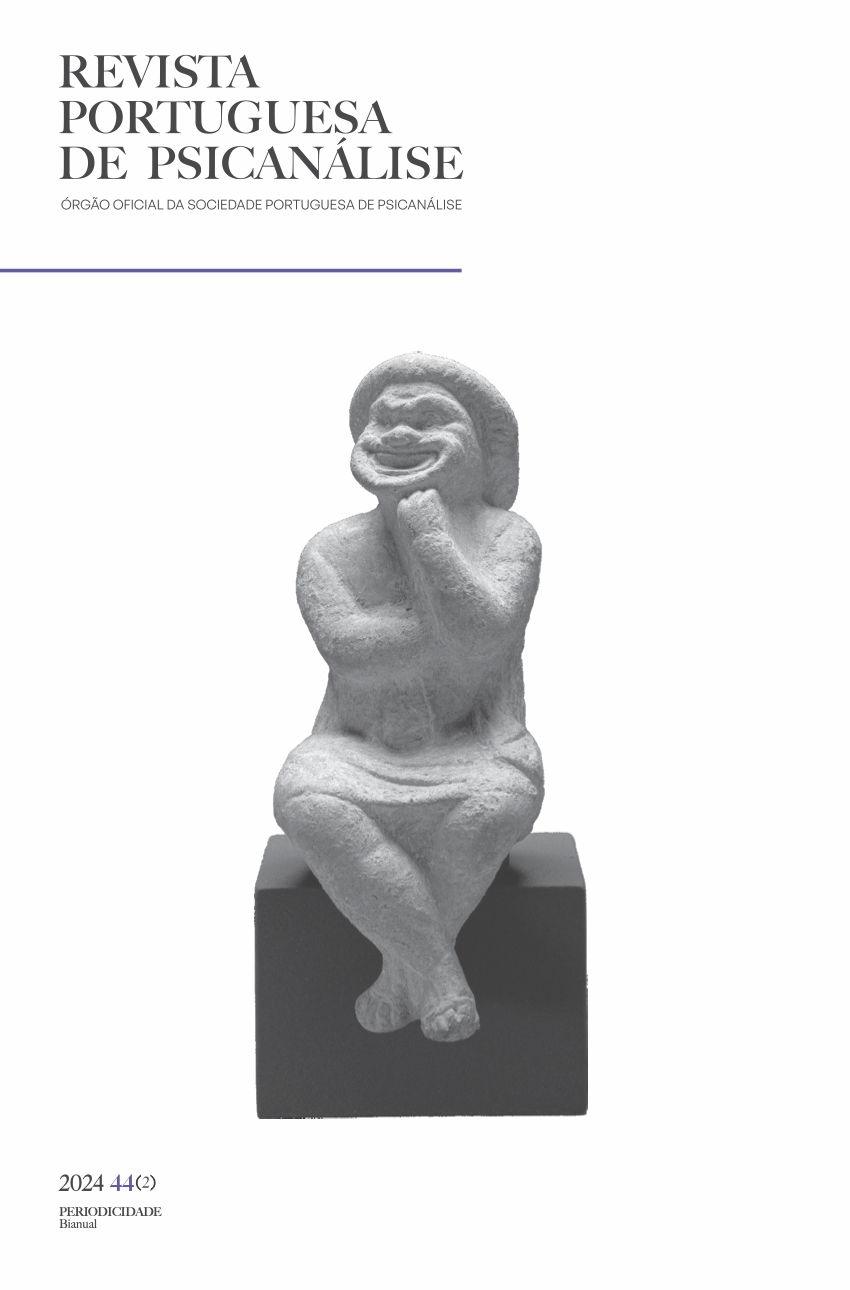Qui est l'Analyste qui Rêve le Patient et qui est le Superviseur qui Comprend le Rêve: Le Tiers en Supervision

Résumé
Dans cet article, nous avons cherché à examiner le développement parallèle des idées concernant la supervision en psychanalyse et l'émergence du concept de Tiers Analytique. Bien que ce concept n'ait pris une référence concrète que dans les travaux de Grotstein (1979, 2000) et d’Ogden (1994), il serait déjà présent dans l'esprit et le travail clinique de plusieurs psychanalystes, comme cela a été tenté de le démontrer à travers l'exploration de plusieurs Triangles Psychanalytiques.
Nous avons mis en lumière l'importance du concept de Processus Parallèle en Supervision, un processus inconscient qui conduit à reproduire, dans le cadre de la supervision, la dynamique propre à la situation analytique. Ceci permet au superviseur d'identifier les aspects encore non compris par le supervisé. De cette manière, le superviseur doit être capable d'explorer le rêve non encore exploré par le supervisé, afin que ce dernier puisse, à son tour, assister le patient dans son processus onirique.
Mots-clés
supervision, tiers analytique, triangles psychanalytiques, processus parallèle, histoire de la psychanalyse
Biographie de l'auteur
Guilherme Canta
Psicólogo Clínico e Psicoterapeuta, Membro Candidato da Sociedade Portuguesa de Psicanálise. Serviço de Psicologia Clínica e Hospital de Dia do Hospital Júlio de Matos – Unidade Local de Saúde São José e Consultório Privado, Lisboa.
Références
- Anzieu, D. (1989). Beckett and Bion. International Review of Psycho-Analysis, 16, 163–169.
- Baranger, M. & Baranger, W. (2009). The Work of Confluence – Listening and Interpreting in the Psychoanalytic Field. Karnac Books & International Psychoanalytical Association (IPA).
- Bléandonu, G. (1993). Bion, A Vida e a Obra – 1897-1979. Imago.
- Coelho Junior, N. E. (2015). Figuras da Terceiridade na Psicanálise Contemporânea: Suas Origens e seus Destinos. Cadernos de Psicanálise Rio de Janeiro, 37(32), 175-195. http://pepsic.bvsalud.org/scielo.php?script=sci_arttext&pid=S1413-62952015000100010&lng=pt&tlng=pt
- Coelho Junior, N. E. (2016). The Origins and Destinies of the Idea of Thirdness in Contemporary Psychoanalysis. The International Journal of Psychoanalysis, 97, 1105–1127.
- Ferro, A. & Basile, R. (Eds.) (2009). The Analytic Field – A Clinical Concept. Karnac Books & The European Federation for Psychoanalytic Psychotherapy (EFPP).
- Freud, S. (1955). Analysis of a Phobia in a Five-year-Old Boy. Em S. Freud, The Standard Edition of the Complete Psychological Works of Sigmund Freud, vol. x (pp.1–149). The Hogarth Press. (Original publicado em 1909.)
- Green, A. (2004). Thirdness and Psychoanalytic Concepts. The Psychoanalytic Quarterly, LXXIII(1), 99–135.
- Green, A. (2005). Key Ideas for a Contemporary Psychoanalysis – Misrecognition and Recognition of the Unconscious. Routledge.
- Grotstein, J. S. (1979). Who is the Dreamer Who Dreams the Dream and Who is the Dreamer Who Understands It. Contemporary Psychoanalysis, 15(1), 110–169.
- Grotstein, J. S. (1990). The “Black Hole” as the Basic Psychotic Experience: Some Newer Psychoanalytic and Neuroscience Perspectives on Psychosis. Em A.-L. Silver & M. B. Cantor (Eds.), Psychoanalysis and Severe Emotional Illness (pp. 29–46). The Guilford Press.
- Grotstein, J. S. (2000). Who is the Dreamer Who Dreams the Dream – A Study of Psychic Presences. Routledge.
- Herman, W. E. & Fair-Schulz, A. (2018). The Psychological Odyssey of 1909: Carl Gustav Jung’s Pivotal Encounter with Sigmund Freud During Their Journey to America. Swiss American Historical Society Review, 54(2), 1–26.
- Jones, E. (1989). A Vida e a Obra de Sigmund Freud – Volume 2: A Maturidade (1901-1919). Imago. (Original publicado em 1955.)
- Jung, C. G. (1950). The Tavistock Lectures. Bollingen Series XX – The Collected Works of C. G. Jung – Volume 18 – The Symbolic Life. Princeton University Press. (Original publicado em 1935.)
- Kernberg, O. F. (2010). Psychoanalytic Supervision: The Supervisor’s Task. The Psychoanalytic Quarterly, LXXIX(3), 603–627.
- Kernberg, O. F. (2019). Reflections on Supervision. The American Journal of Psychoanalysis, 79(3), 265–283.
- Kwawer, J. S. (2019). The interpersonal Legacy of Chestnut Lodge. Contemporary Psychoanalysis, 55(1–2), 86–98.
- Meigs, K. (2017). The Failure of Clara Thompson’s Ferenczian (Proxy) Analysis of Harry Stack Sullivan. The American Journal of Psychoanalysis, 77(3), 1–19.
- Ogden, T. H. (1994). Subjects of Analysis. Karnac Books.
- Ogden, T. H. (2009). On Psychoanalytic Supervision. Em Rediscovering Psychoanalysis – Thinking and Dreaming, Learning and Forgetting (pp. 31–49). Routledge.
- Pereira, D. R. & Coelho Junior, D. R. (2022). Intersubjetividade no Pensamento Clínico de Harold Searles: Ressonâncias Contemporâneas. Revista Latinoamericana de Psicopatologia Fundamental, 25(1), 43–65. https://doi.org/10.1590/1415-4714.2022v25n1p43.3
- Petratos, D. B. (1990). The European Teachers of Dr. Frieda Fromm-Reichmann. Em A.-L. Silver & M. B. Cantor (Eds.). Psychoanalysis and Severe Emotional Illness (pp. 152–166). The Guilford Press.
- Searles, H. F. (1955). The Informational Value of the Supervisor’s Emotional Experiences. Psychiatry, 18(2), 135–146.
- Silver, A.-L. (1993). Countertransference, Ferenczi, and Washington, DC. Journal of the American Academy of Psychoanalysis, 21(4), 637–654.
- Silver, A.-L. & Cantor, M. B. (Eds.) (1990). Psychoanalysis and Severe Emotional Illness. The Guilford Press.
- Simon, B. (1988). The Imaginary Twins: The Case of Beckett and Bion. The International Review of Psycho-Analysis, 15, 331–352.
- Vollmer Filho, G. & Bernardi, R. (1996). As Funções Múltiplas do Supervisor, os seus Relacionamentos com o Supervisionado, o Analista do Supervisionado, o Paciente, o Quadro de Referência Teórico e a Instituição de Treinamento. Revista de Psicanálise da Sociedade Psicanalítica de Porto Alegre, III(2), 285–293.
- Watkins Jr., C. E. (2018). The Supervisee’s Internal Supervisor Representations: Their Role in Stimulating Psychotherapist Development. International Journal of Psychotherapy, 22(3), 63–73.
- Waugaman, R. C. (2015). Searles’s Discovery of the Parallel Process in Supervision. Psychiatry – Interpersonal and Biological Processes, 78(3), 225–230.
- Zaslavsky, J., Nunes, M. L. T., & Eizirik, C. L. (2003). A Supervisão Psicanalitica: Revisão e uma Proposta de Sistematização. Revista de Psiquiatria doRio Grande do Sul, 25(2), 297–309.